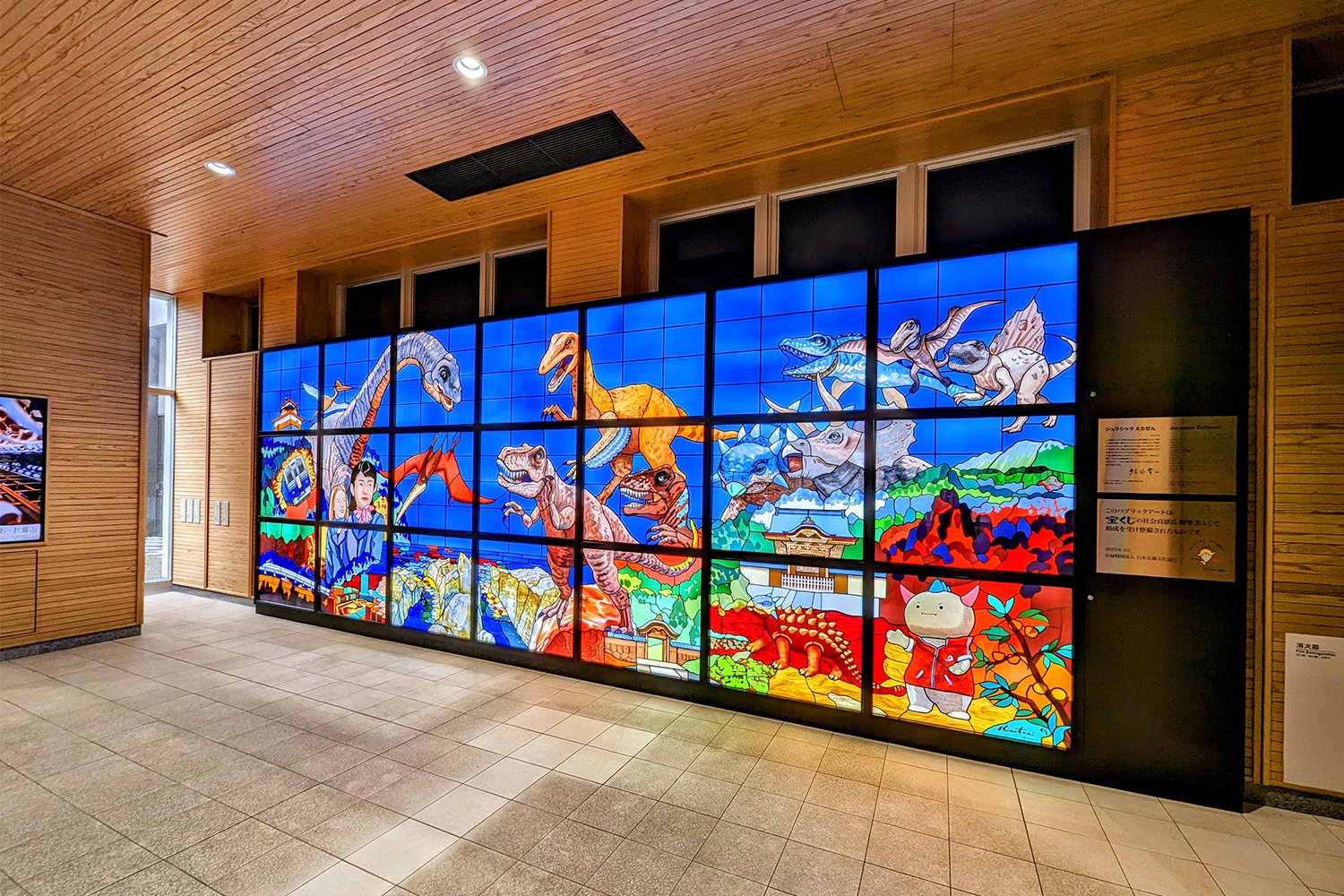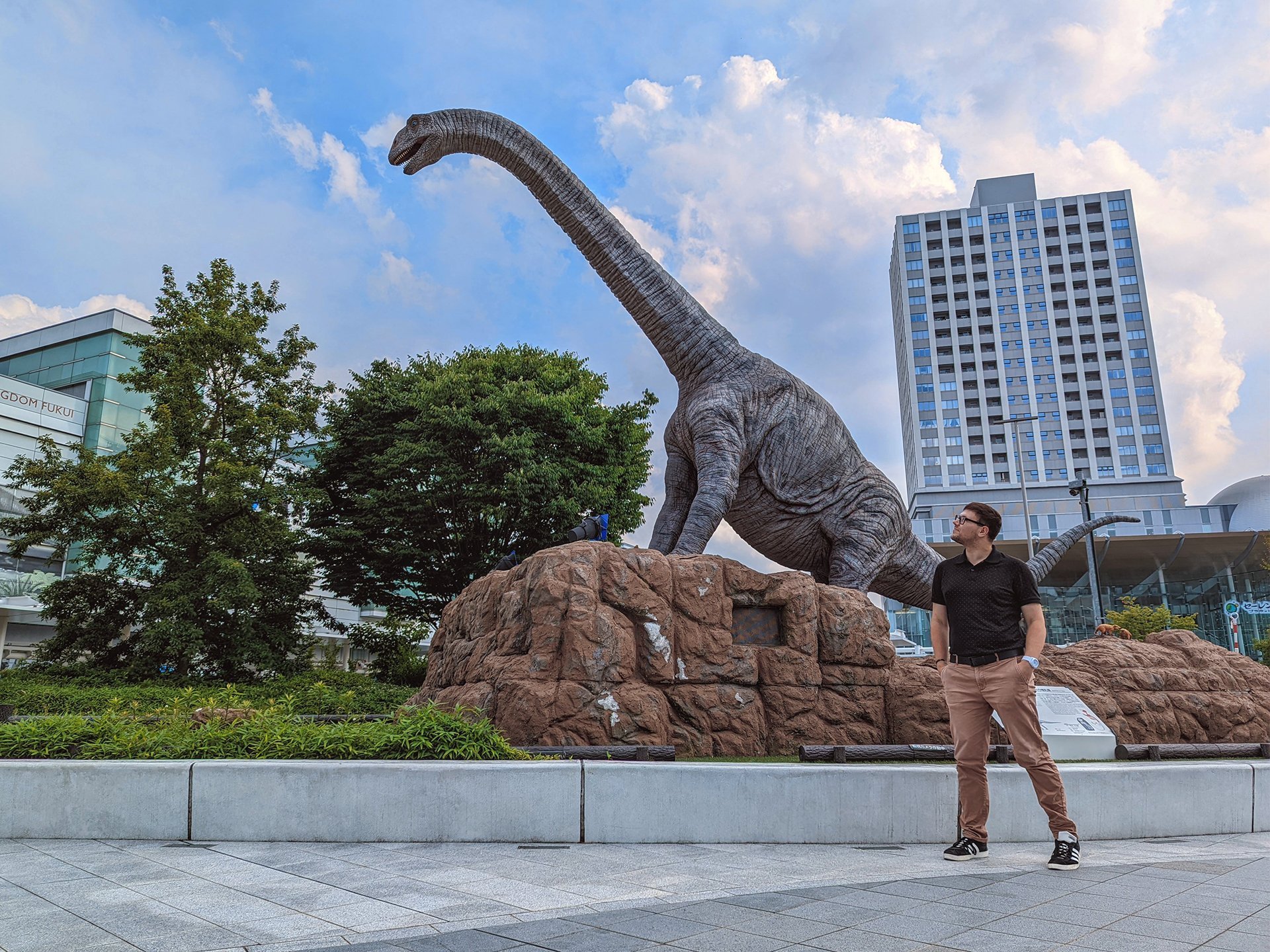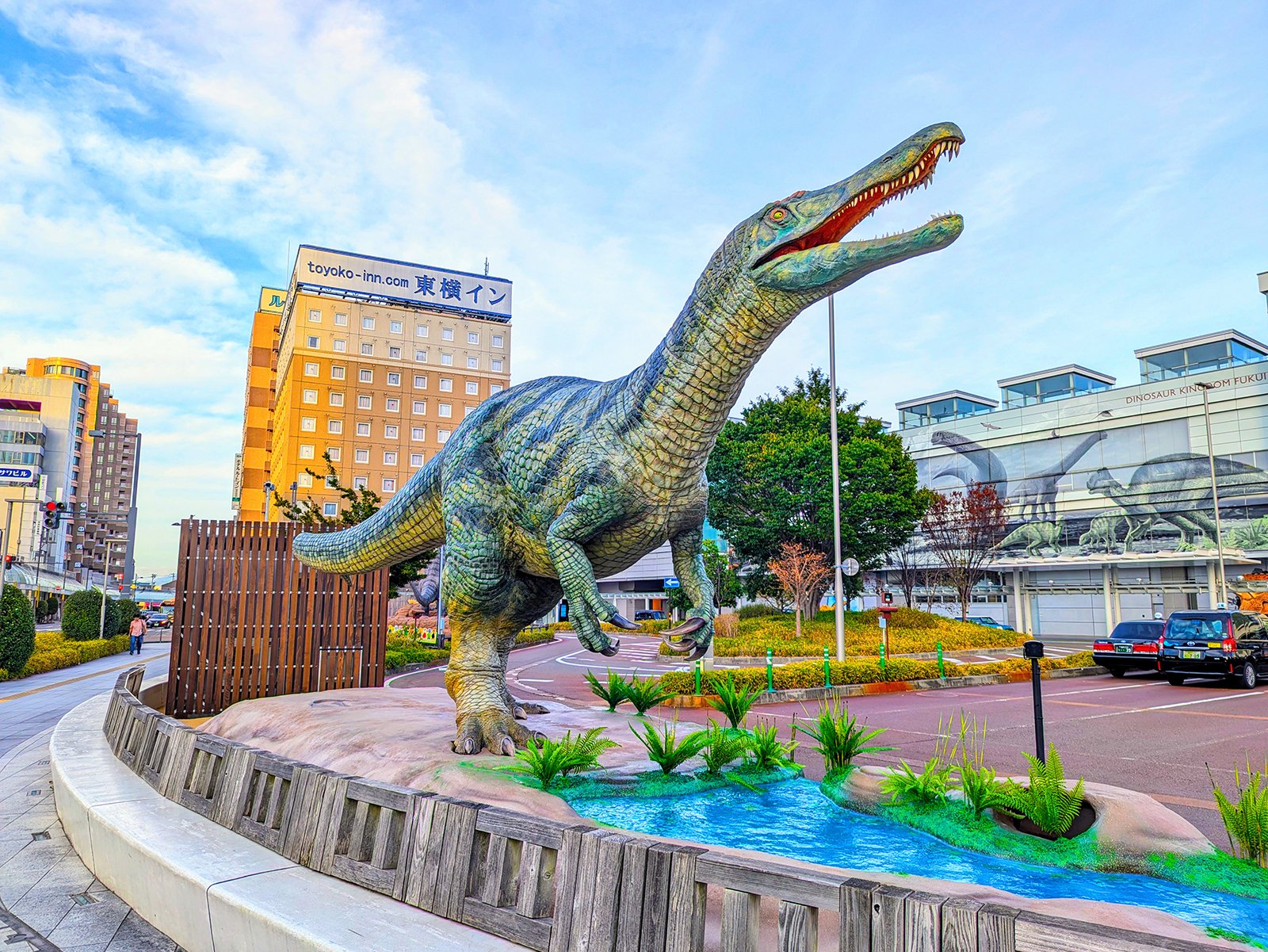Fukui Awaits the Hokuriku Shinkansen

The Dinosaur Kingdom will soon join Japan’s bullet train network.
Cover photo: The Hokuriku Shinkansen (bullet train) runs between Kanazawa and Tokyo, Japan (2020). Photo by Maeda Akihiko and via Wikimedia (color-corrected).
Intro
Sunday, September 10th, local officials gathered at JR Fukui Station to unveil a countdown board awaiting March 16th, 2024. On this date, Fukui Prefecture (福井県) will finally join Japan’s bullet train network.
Through a newly-opened track extension of 125 kilometers (78 miles) to the city of Kanazawa, the Hokuriku Shinkansen (北陸新幹線) will connect Fukui to Tokyo without stopover. Running at a maximum speed of 260 kilometers (162 miles) per hour, the train will shorten the fastest trip to the nation’s capital by 30 minutes, to just under three hours. The price for a reserved seat will be 15,810 yen (approx. 106 USD).
Construction of this latest extension began over a decade ago, in August of 2012. The project is part of a long-term plan to connect Tokyo to Osaka via the northern coast, an idea first conceived in 1973. Fukui Governor Tatsuji Sugimoto (杉本 達治) proclaims, “Half a century’s worth of dreams are finally coming true.”
The Hokuriku Shinkansen originally debuted ahead of the 1998 Winter Olympics, running between Tokyo and the host city of Nagano, a distance of approximately 230 kilometers (143 miles). The line’s length nearly doubled by 2015, reaching Kanazawa in the Hokuriku region.
Big Expectations
After multiple delays, the total cost of the Kanazawa-Tsuruga extension has risen to about 1.7 trillion yen (approx. 11 billion USD), an investment shared between national, prefectural, and municipal governments. The Hokuriku route is jointly operated and maintained by private companies JR East and JR West.
Fukui residents are hopeful the shinkansen will bring tourists to enjoy local cuisine, crafts, and attractions. The Development Bank of Japan estimates the shinkansen will generate an annual economic impact of 30.9 billion yen (approx. 200 million USD).
Though Fukui consistently ranks as the ‘happiest’ of Japan’s 47 prefectures, it is the second-least visited by international tourists. Prior to COVID-19, Fukui attracted just 0.2% of Japan’s total foreign visitors, compared to 2.0% in neighboring Ishikawa (Kanazawa).
In 2018, Fukui welcomed 940,000 people. After the shinkansen extension opens, the prefecture expects an additional 780,000 visitors per year, with the overwhelming majority hailing from Tokyo metropolis. The Fukui prefectural government has begun a PR push to generate excitement.
Tokyo Bias
Until now, some 70% of Fukui’s visitors have come from the nearby areas of Kansai (Osaka/Kyoto) and Chukyo (Nagoya) but that may change when travel southward becomes more bothersome and expensive.
Limited express train routes running parallel to the new shinkansen extension will be discontinued. Both the Thunderbird — which runs between Kanazawa, Kyoto, and Osaka — and the Shirasagi — running between Kanazawa, Maibara, and Nagoya — lines will be shortened, terminating at Tsuruga instead. Just prior to the 2025 World Expo in Osaka, it’s an unfortunate choice.
Passengers traveling between the north and south will have to transfer through the new JR Tsuruga Station. At a height of 37 meters (121 feet), it will be the tallest in the country, equipped with 19 ticket gates.
Despite an added eight minute transfer, the total travel time from Osaka to Fukui will be reduced by three minutes, but fare will increase to 7,290 yen (approx. 49.00 USD) for a reserved seat. Likewise, fare to Nagoya will be 6,960 yen (approx. 47.00 USD).
Growing Fears
Excitement is mixed with anxiety. The distance between the new JR Awara Onsen Station and the eponymous hot spring town — about 4.5 kilometers (2.8 miles) — is raising concerns about secondary transportation. Further south, residents of Sabae are especially worried, as the city’s lost limited express station will not be replaced by a stop on the new shinkansen route.
Development
Additional construction projects have been stalled by a nationwide labor shortage and soaring material costs. Around JR Fukui Station, several plans have been postponed by multiple years.
Nevertheless, there’s plenty to be excited about. The Fukui Prefectural Dinosaur Museum — considered among the largest such institutions in the world — completed major renovations this summer.
Opened last year, the comprehensive Ichijodani Asakura Family Site Museum offers insight into one of six spots to receive a rare triple national designation as a Special Historic Site, Special Place of Scenic Beauty, and an Important Cultural Property.
JR Fukui Station is undergoing renovations as well, with a complete makeover of the eating and shopping area. Across the street, construction continues on a new luxury hotel. At 120 meters (394 feet), Courtyard by Marriott Fukui will be the tallest building in the prefecture. Both sites will open in March to coincide with the shinkansen’s arrival.
Future Plans
With the Fukui extension complete, some 140 kilometers (87 miles) are left to connect the Hokuriku Shinkansen to Osaka, representing about 20% of the total route to Tokyo. The path is poised to run from Tsuruga to Obama (Fukui) and Kyotonabe (Kyoto), terminating at Shin-Osaka.
The project is meant to revitalize local economies while also serving as an alternate path to the Tokaido Shinkansen in the event of a national disaster.
Construction has not yet started on the Tsuruga-Osaka extension, which is currently delayed by environmental assessments in Kyoto; 80% of the new track will require tunneling. With an estimated construction time of 15 years, it’s not expected to be complete before 2046.
New Golden Route
In contrast to the traditional sightseeing itinerary — primarily Tokyo, Kyoto, and Osaka — the Hokuriku Shinkansen runs a course dubbed Japan’s New Golden Route.
Though the 25,000 yen (approx. 170 USD) price-tag is set to rise with the opening of Fukui’s shinkansen extension, the Hokuriku Arch Pass will likely remain a great deal for foreign tourists, especially compared to the 60% increase announced for the nationwide JR Pass this coming October.
Having lived in Fukui City for almost two years now, I am excited for more visitors to discover this scenic region. I will continue to write about the area. Thank you for your continued support.
Author’s Note
As part of the Fukui Reporter program, I am tasked with participating in local events and publicly promoting the prefecture. This is a volunteer position that allows me free entrance to a selection of museums throughout the area. The opinions I share are my own.





